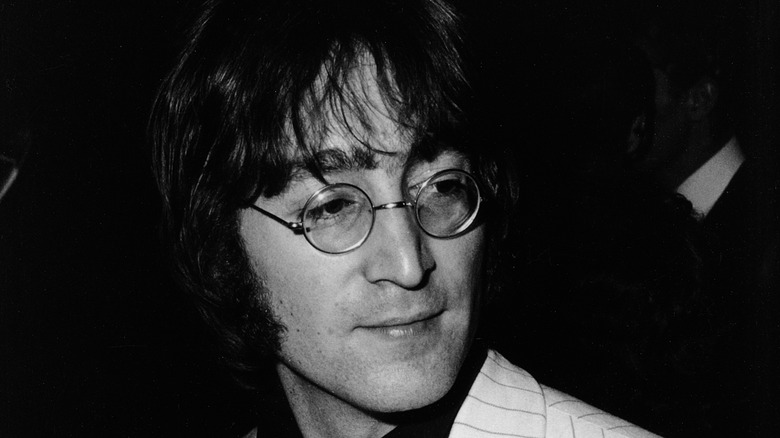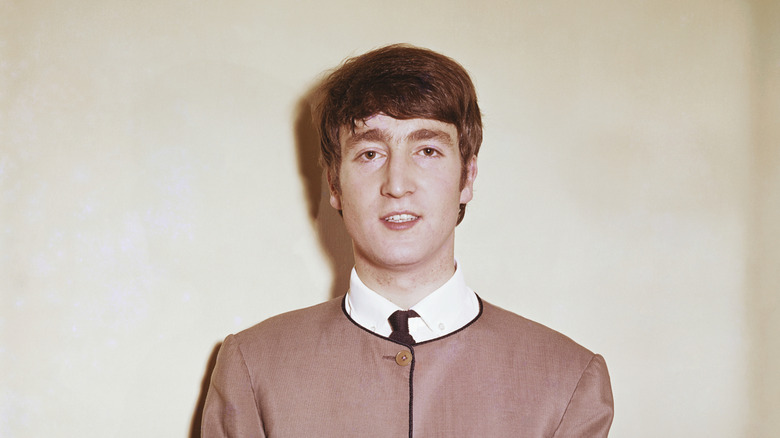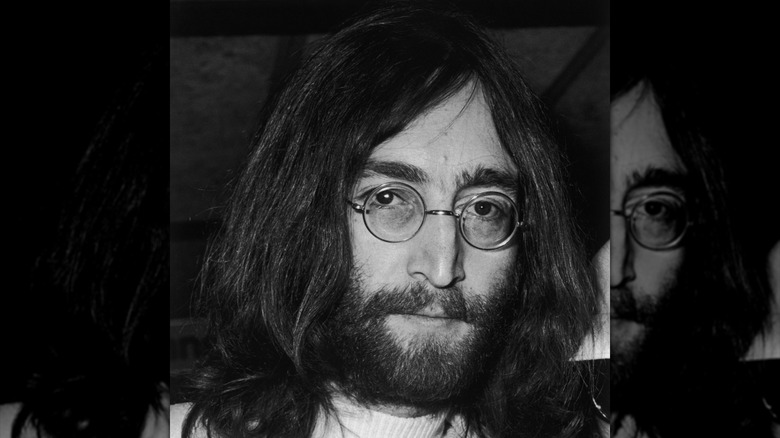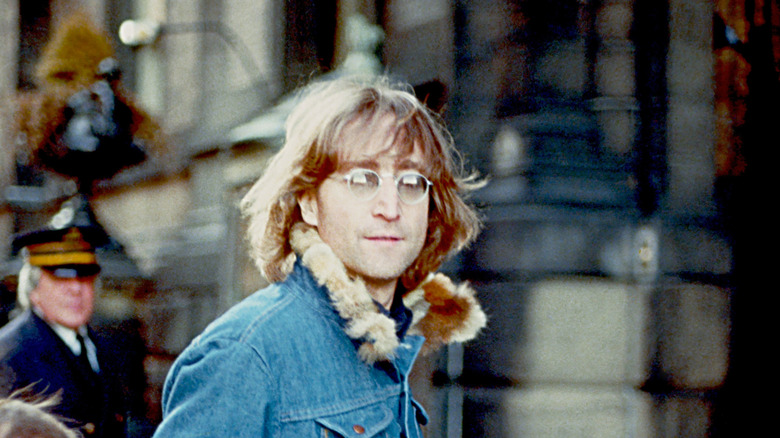John Lennon's Fixation With The Number 9, Explained
First entering the public consciousness with The Beatles in the early 1960s, John Lennon was arguably one of the most famous people in the world when he was gunned down outside his New York City home by assassin Mark David Chapman in 1980. While the tragic story of Lennon's murder has been often recounted, as have his musical triumphs and his noble but ultimately quixotic attempts to end war and bring about world peace, fascination with this brilliant singer, musician, and songwriter has not waned.
Since his passing, fans who've done some digging have come to realize that the number nine played an outsized role in Lennon's life. For those who choose to look, it's hiding in plain sight: in his music, addressed in interviews, and part of some unusual trivia about various aspects of his life. In fact, one of the first songs that he'd ever written, "One After 909," appeared on The Beatles' "Let It Be" album; as he explained in the book, "All We Are Saying," the numbers in the title were hardly random. "That was something I wrote when I was about 17," Lennon said. "I lived at 9 Newcastle Road. I was born on the ninth of October ..."
As it happens, the more one digs into his life and music, the more one realizes just how prevalent that particular number was. To find out more, keep reading for a deep dive into John Lennon's fixation on the number nine, explained.
The number 9 made multiple appearances in John Lennon's early years
There's a lot to unpack when examining John Lennon's fascination with the number nine, so buckle up. As mentioned, he lived at 9 Newcastle Road, in the Liverpool suburb of Wavertree; Newcastle, Liverpool, and Wavertree each have nine letters. While attending art college, Lennon took the No. 72 bus, which Sirius XM points out when added, equals nine. Furthermore, The Beatles made their first appearance at The Cavern Club in 1961 — on February 9. It was several months later that the man who became their manager, Brian Epstein, first saw them perform there — on November 9. Just a few months after that, Epstein landed the group their first record deal, with EMI — on May 9, 1962. The band's breakout single, "Love Me Do," was released as Parlophone R4949.
Each of those dates, all nines, changed the course of Lennon's life. That was also the case with February 9, 1964, the date that The Beatles made their first American television appearance on "The Ed Sullivan Show," which became an indelible moment in pop culture history.
In addition, the surname of his songwriting partner, Paul McCartney, has nine letters, while The Beatles' musical career ended in 1969 — after nine years. "It's just a number that follows me around, but, numerologically, apparently I'm a number six or a three or something, but it's all part of nine," Lennon said, via "All We Are Saying."
The number 9 was central to what is arguably The Beatles' weirdest song
When examining both the troubled history of John Lennon and his musical ouvre, nowhere does the number nine loom larger than the "White Album" track "Revolution #9." Clocking in at eight minutes and 22 seconds, "Revolution #9" is as experimental as it is unsettling, an avant-garde sound collage made from various tape loops that Lennon dug up from the EMI archives.
Far from a traditional Beatles pop hit, the track is an example of why Lennon actually hated songwriting, allowing an opportunity to indulge his creativity in the recording studio in a far different manner. "We were cutting up classical music and making different-size loops, and then I got an engineer tape on which some test engineer was saying, 'Number nine, number nine, number nine.'" Lennon explained in a 1970 interview with Rolling Stone.
According to Lennon, "Revolution #9" was more than just a random collection of sounds, but his aural interpretation of what the titular revolution would actually sound like. "Revolution #9" was an unconscious picture of what I actually think will happen when it happens; that was just like a drawing of revolution," Lennon added in that same interview. "Nine turned out to be my birthday and my lucky number and everything. I didn't realize it; it was just so funny the voice saying 'Number nine;' it was like a joke, bringing number nine into it all the time, that's all it was."
He revisited the number with #9 Dream
Lennon revisited his favorite number in a subsequent song, "#9 Dream." A single from his 1974 solo album, "Walls and Bridges," not only was it not a quirky collection of tape loops, the song proved to be a hit, peaking at (wait for it) No. 9 on the Billboard Top 100, where it spent 12 weeks. Interestingly, one of his best-known singles, "Imagine," spent nine weeks on that chart — as did "Stand By Me," "Give Peace a Chance," and "Power to the People."
As Lennon once said, via "All We Are Saying," the song's beginning was inauspicious, in that it was literally inspired by a dream. "That was a bit of a throwaway. It was based on some dream I had," Lennon said. Despite the seemingly dreamlike inspiration, the rest of the song was just Lennon doing what he did best. "That's what I call craftsmanship writing, meaning, you know, I just churned that out ... I just sat down and wrote it, you know, with no real inspiration, based on a dream I'd had" (via JohnLennon.com).
The song's gibberish chorus — "Ah! böwakawa poussé, poussé" — is the part of the song he recalled from his dream. When sounded out, that phrase consists of nine syllables. Connecting "#9 Dream" to "Revolution #9," Lennon said, "That 'Number nine, number nine' Beatle thing was an engineer's voice. It just sorta seems to be my number, so I stick with it," Lennon said.



